Yarrive Konsky | Two-Wheel Passion
Share
Although I met Yarrive Konsky for the first time during the trip to Canada this past September for the Montreal Supercross, I was already fairly familiar with the Australian thanks to his ties to American racers. For the better part of the past decade, Konsky has tapped the US Supercross talent pool and taken riders to contest the Australian Supercross Series for his team, Penrite Honda. The Australian team has won a handful of titles with the help American talent, as Gavin Faith and Jimmy Decotis both aced the 250 class at different times while Justin Brayton is the three-time and defending champ in the 450 class. Getting the offer to ride for Yarrive’s team has been a sort of saving grace to some rider’s careers, as he offers them the tools and support they need to get the job done.
Konsky has an undeniable passion for motorcycles and it helped him hold a number of roles in the Australian motorcycle industry, from riding school coach to Supercross event organizer to race team owner, and seemingly everything in between.
I asked just three questions during our recorded conversation at the Montreal race: what is your backstory, how and why did you establish a relationship with American riders, and what should American race fans know about the Australian motocross scene? The text below is Konsky’s complete answers to the simple inquiries. There really was no need to add more context to the quotes, because his answers explained it all. Take it away, Yarrive…
I started racing when I was 13, which is extremely late for most of the guys that come through. The first time I stepped onto a motorbike was at my cousin’s place and that was the first time that I rode into a fence. From that day I was hooked. The freedom of being on a bike and the opportunity it presents to all of the people that ride one is if you put some work at it and the fundamentals, you can better yourself as a person and as an athlete. That is what motorcycle sport taught me at a young age and is what got me hooked into it.
I was 15 when I stopped racing. Financially it was really hard on my family, so I finished school. During that time I helped young amateurs get rides and sponsorships, like Cam Sinclair, and a lot of parents in the paddock asked for my help with sponsorship proposals. I was known for being able to put proposals together and understanding the market. When you don’t have a lot of money, you’re forced into doing sponsorships. I finished school and then started a race team with a dealership and two top-10 local guys. From 18 years of age onwards I put programs together. I worked at a motorcycle dealership and started a program called Peter Stevens Suzuki, where Suzuki gave us 20 bikes across a heap of riders and Fox Racing was involved with a few other brands. Yamaha sought after me in 2001, after I started a TV show with two friends called MX TV, and I brought in money while I ran some Supercross events. I was in my mid-20s and was running one of Australia’s bigger school programs that traveled around the country doing 50-plus schools a year, which helped fund the racing.
I joined Yamaha in 2002 and a businessman sought after me to start a race team. I was reluctant at first because you hear about people coming and going with the sport and Yamaha didn’t want to support the team at the level that we wanted it to go to. They wanted to retain me and didn’t want the schools to go outside of our state because they had a national program, but I wanted to grow it. We then sat with Honda and in 2003 I started a team with Honda that in our first year of Supercross finished second in the 250 class, when it was two-strokes. Jay Marmont won the championship and our rider, Troy Dorran, finished second. We finished second in the motocross championship in the 250 class and third in the 125 class, which was the first year or second year that Yamaha had their 250F. Nothing was coming close to that bike, the Honda 125 had nothing for it, but we finished second in motocross and third in Supercross. It was tough for me and I went through some financial difficulties because the person that was involved walked away after four months. It hurt and it took me a couple of years, but I stayed involved with Honda in the amateur program and in 2004 and 2005, we dominated the Junior programs with Kade Mosig and Shaun Williamson was another kid that won for us.
In 2007 Honda asked if I wanted to run the Australian 250 team. At that time, I was running multiple rounds of the Australian Supercross championship, because the race promotion had been divided, and there was a magazine called Stroke I had started. I walked away from MX TV because Yamaha didn’t want me involved with it since I was a Honda person. I wanted the program to prosper so I walked away, which I felt was fair. We had a good year in 2007 and I brought Shell into the racing program, so we had cool bikes and good activation.
When Honda outsourced everything in 2008, they asked if I was ready. I had built everything to a solid base. I was a kid whose first car was 300 dollars and the CR125 was the most expensive thing I owned. I didn’t come from money, so when Honda offered it to me, I took it with both hands. We inherited Craig Anderson’s contract and that put him with Daniel McCoy and Dean Ferris, which was his first year, while Kade Mosig and Josh Cachia were in the 250 class. It was a very big team, probably too big, but Honda wanted it and I inherited some contracts that they already had.

In 2011 I came to America, something I always wanted to do, and started training at MTF because there were unfinished goals that I always wanted to achieve. I had finished second in the Vet championship to Cameron Taylor, so I wanted to improve my skills and get the repetition and action going again. At MTF I met Gavin Faith and saw how fast he was in corners and whoops, but I had never heard of him. We had Joey Savatgy and Kyle Peters come down for some junior championships, but Gavin hadn’t. I talked to Coleen Millsaps about bringing him to Australia because he was a diamond in the rough. We brought him down in 2011 and he turned up to round one in Sunshine Victoria and crashed three times in the mud fest, but still finished second. He finished second overall in the championship that year, Matt Moss won it. I knew then that for my program to work with the changing trend in the market with social media that we needed to become a global platform, that any event is a global event and that all of the brands that support us will get a tangible return because of a global reach. We had Gavin back in 2012 and Chad Reed came down for three rounds, and I organized the Supercross championship and we had one round with MotoGP.
The biggest hurdle we all faced from 2008 to 2018 was how the global financial crisis affected the smaller countries. To race in Australia is really no different than America and our landmass has a big footprint like America, but we only have 25 million people. So the cost to go riding is very high and the rider’s salary is much different than it is for someone like Roczen or Tomac. In 2012 I brought Gavin back and we won the championship, and in 2013 I brought Weston Peick over and he led the championship until the final round when he hurt his shoulder. He was an animal on the motorcycle but unfortunately, we lost. It made perfect sense for me to run our program this way, because our Supercross starts when nothing is going on in America. The biggest thing I believe that it does for our sport in Australia is that the America-based riders that have come to compete for a one-off race or the whole championship are top-10 caliber riders and it helps Australian guys see where the benchmark is.
With Justin Brayton, I was trying to figure out who we wanted to run in the 450 class because we were going Supercross-only. I had taken up a really good job in Supercars, which is our equivalent to NASCAR, so I reached out to Justin on Instagram after he had gotten hurt while riding for BTO Sports KTM. His wife pointed out that he had a lot of unread messages on Instagram, but he didn’t know what they even were, so he saw mine and sent a message back. The previous year I had Jimmy Decotis down and he won the championship for us in the 250 class, so Justin read through and replied.
The greatest thing that has happened with Justin is the fact that we built a relationship across the world. Honda and most of the manufacturers change their Managing Director employees every three years and the then-Vice President of American Honda had done a stint in Australia and he had a relationship with the people in Australia. Justin was at the end of his contract with KTM and wanted to be with Honda, so I rang the Australian division of Honda up and talked about how we could make it work. I told them what I wanted to do and how we needed help to make things happen like I had done with other riders. We made contact with Dan Bentley and everyone agreed that it needed to happen, so Justin went to Honda to pick up the parts and things to make it work before he flew down for the first round. We built his bike in the car pack, he raced round one, flew back to America for a wedding, then flew back with his family. The last three years are history.
I look overseas for riders because every brand that is associated with our team is a global brand. It is our responsibility to put that brand in front. I was born in Israel, I went to a Catholic school in Australia, and we have a diverse culture in Australia, so I have been brought up not to discriminate against anyone and as long as you treat me right, I’ll treat you right. I don’t care where you come from, if there is a role that I need to fill and you’re the best person for it, you’re going to get it. It’s never going to be based on where they’re born or how they look, but based on their talents and resiliency to get to the top. If you’re an Australian rider, beat the other riders that come to Australia and prove that you’re worthy of anything. We can’t have the mindset that we are going to support because they were born in a certain country. If that happened in America, Chad Reed wouldn’t be Chad Reed, Michael Byrne wouldn’t have a job as one of the best team managers in the world, Dan Reardon wouldn’t have come, and the same for Jeff Leisk. The list is long. It’s a global sport with global brands and they all have one objective which is to win, put the brand in front, and hope it translates to sales. I try to put the best guys on our bikes to give the best return to all of our partners. It’s that simple.
The brands are global, the riders are universal. So it doesn’t matter where they live, they just have to get on a plane. The same CRF450R that is sold in America is sold in Australia, so bringing all of that together is important for the longevity of the sport in total. To take the sport to the next level we need a global Supercross championship.
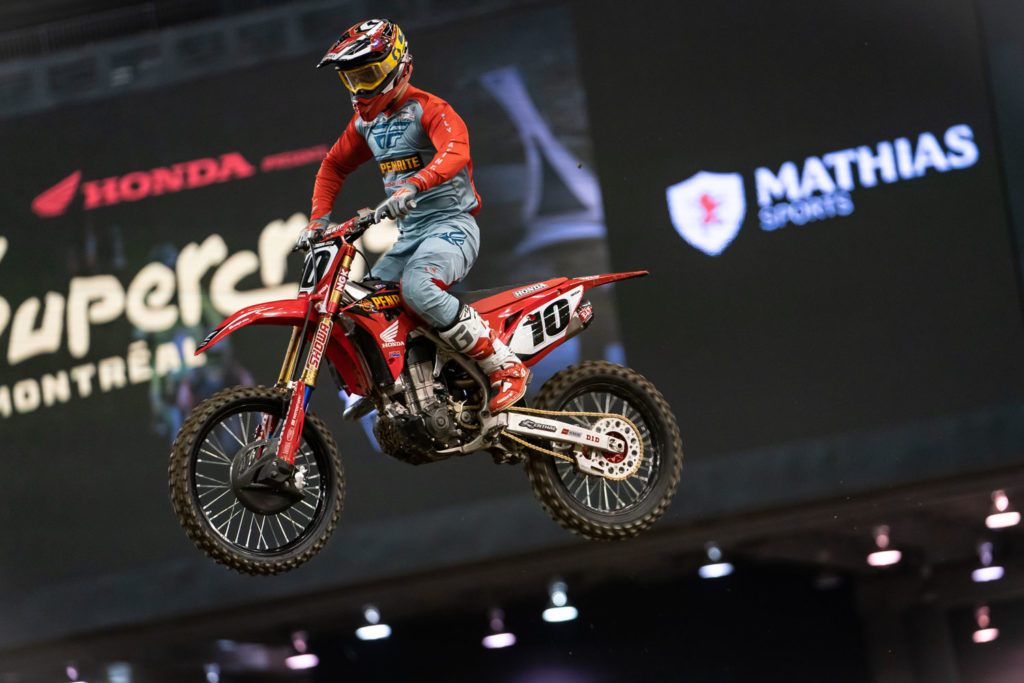
It is so expensive for an Australian rider to go to America, where there is such a depth of talent. An Australian rider that could finish in 15th place in America can’t afford to go there and make the next steps, and it’s the same for an American rider to come to Australia. It takes a lot of money and that doesn’t necessarily exist unless there is some old family money. It is difficult. But you would be surprised how much America influences the sport, in terms of sales, because we watch. With the internet, we can buy passes and watch it online live.
It’s great that we have the Lawrence brothers competing because now we will get the next wave of kids to come through that want to be them. We need that just like America needs kids that want to be the next Eli Tomac and Justin Brayton. In that regard, I think the sport is healthy because we have great athletes earning money. At the domestic level in Australia, the riders are earning a great living. No, it’s not the same as in America but that’s because Australia only influences 25 million people. That’s just the reality of the economies and their scale.
I think the sport would prosper if we could see events in different parts of the continent. I would love to see a World Supercross race in Australia, New Zealand, China, and Japan. That would bring a flourish of new people to come through. Because the thing that scares me is where is the next group of 50,000 people that will buy motorcycles coming from? How does motorcycle racing encourage them to buy a bike instead of a football? Or maybe they just want to watch motorcycle racing, but how will we encourage the next group to come through? I believe the American Supercross series helps with that, but it could be double the size. I think that with the strength of Supercross once someone watches it, you have them captured. The greatest thing about our sport is how accessible it is. You cannot go to a football game and walk up to one of the players to get an autograph or a photo, but in America and Australia, all of our athletes are accessible in the pits.
The best rider, no matter where they come from, will always get a ride. I think that riders from all parts of the world need to back themselves and not necessarily live within their comfort zones. They need to step out of it. Dean Ferris rides for a rival team to mine, but I admire that he faced his fears and wanted to challenge himself again. Unfortunately, it didn’t work, but he has the talent to make it work. I hope that it didn’t discourage him or anyone in Australia or Europe from taking that leap.
With how instant the news comes out, you can film something in the morning and people watch it in the afternoon, or even live. That’s the power of social media and I would love to see the sport branch out to become a world series.
Justin Brayton won Daytona in 2018, has qualified in the top-five at Supercross races, won individual motos in the Triple Crown formats, and whilst he’s winning in Australia, guys like Dan Reardon and Brett Metcalfe and Dean Ferris and Luke Clout aren’t far off his pace. And that’s fantastic. What should the Americans know about Australian Supercross? Our series is streamed and if you are a fan, you should be watching. And I think that’s part of why Justin comes down. It’s going to prolong part of his career, because motocross takes it out of a rider, but he ventured out of what he knows to race in other parts of the world to re-invest in himself. The people that run the Australian Supercross series have a great imagination and how it’s presented is first-class.
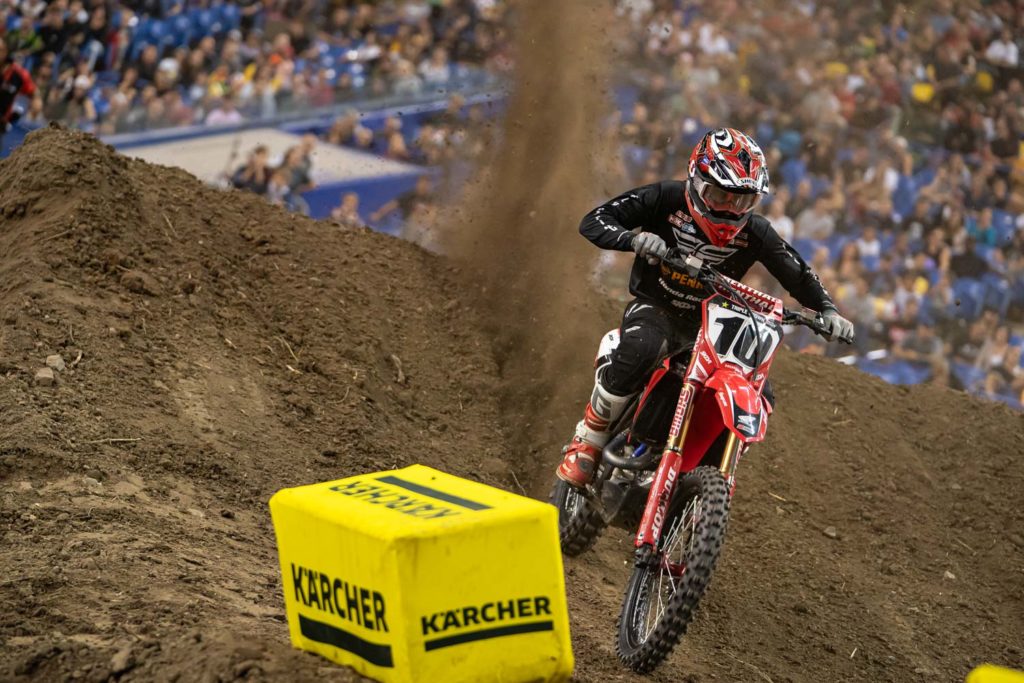


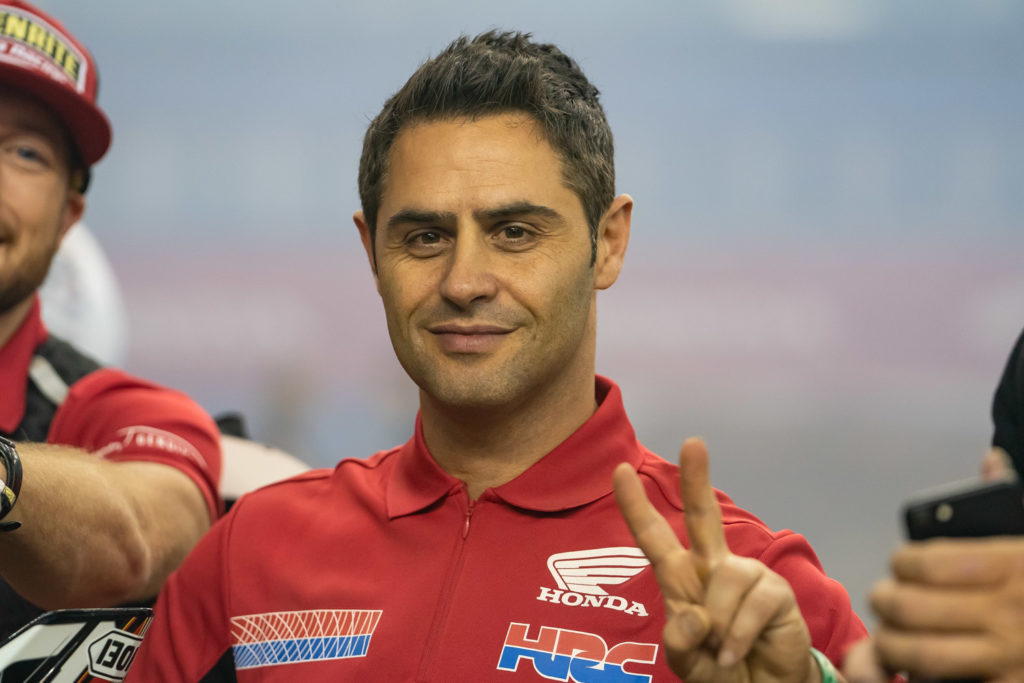

















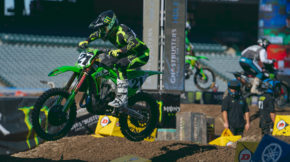


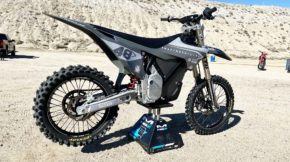

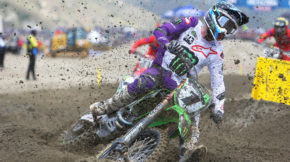

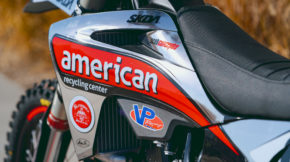
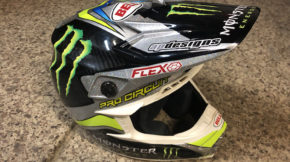

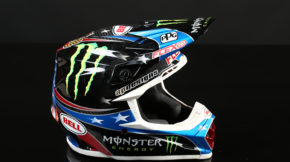
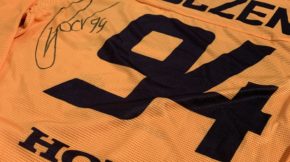

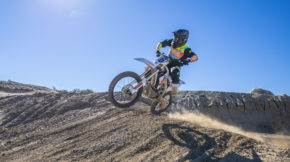
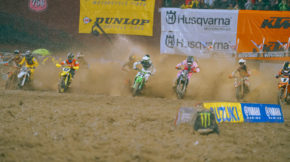
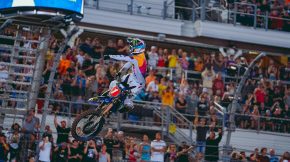
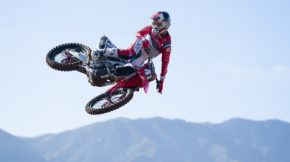
Konsky Organisation
2020 Australian SX Series in October
Melbourne, Brisbane, Perth, Adélaïde
2020 Global Supercross Series in November
Sydney, Auckland, Tokyo, Hong Kong
2020 Gold Coast Games in December
(SX, FMX, Surf, Skate, BMX, and many popular Australian’ water sports & car racing as possible)
& … MXGP in Australia & New Zealand …
Sound good no? 🙂